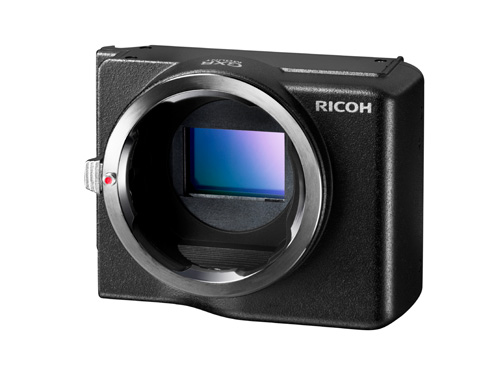Ricoh announces Leica M-mount for its modular GXR system cameras

Ricoh originally announced development of an "expansion unit" to allow its GXR interchangeable unit camera system to accept Leica M-mount lenses back in February, and the camera maker is now out with the official product announcement and plans to ship the GXR Mount A12 next month.
Released back in November 2009, Ricoh's unconventional GXR camera system uses a modular design that combines interchangeable lens units (called camera units) that contain a lens, a dedicated image sensor, and an image processing engine, and plugs into a main camera body unit that contains the camera controls, LCD, flash, battery, memory card, and everything else (including its own processor). Benefits to this unusual design include a more optically efficient lens design in a very compact unit, the ability to use different sizes and types of sensors with each lens, and an air-tight (read dust-free) lens/sensor module. The downside is that each time you buy a new lens you have to pay for practically a whole new camera.
The new Leica lens mount incorporates an APS-C size CMOS sensor as well as a new focal plane shutter, and allows GXR cameras to use Leica M lenses (and other lenses with the use of a conversion adapter). There's a "checking device" included to confirm physical lens compatibility. Other features include:
- Independent color correction at corners
- Peripheral illumination correction
- Distortion correction (strong, medium, or weak selections for both barrel and pincushion distortion)
- Focus-assist function
- Focal plane shutter (1/4000 sec to 180 sec) and electronic shutter (1/800 sec to 1 sec)
- Information on the lens used can be put in the EXIF information
- New scene mode options include soft focus, cross process, toy camera, miniaturize, and high contrast B&W
- An electronic level utilizing an acceleration sensor
Related stories on ZDNet:
